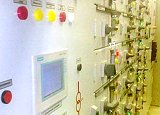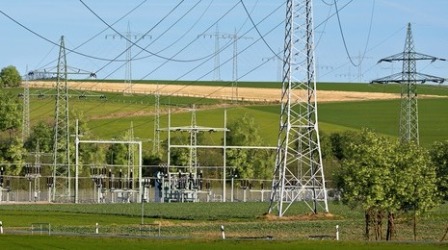Automatic classification for reclosure
 Experience in the operation of overhead lines has established that 70-80% of the damage from the total number of line failures is eliminated on its own in the event of an emergency shutdown of the line. The presence of unstable faults provides an opportunity to attempt reactivation of the emergency disconnection element to maintain the stability of the power system and the reliability of power supply to consumers.
Experience in the operation of overhead lines has established that 70-80% of the damage from the total number of line failures is eliminated on its own in the event of an emergency shutdown of the line. The presence of unstable faults provides an opportunity to attempt reactivation of the emergency disconnection element to maintain the stability of the power system and the reliability of power supply to consumers.
Operating personnel can reactivate the emergency shutdown element for a period of several minutes to an hour or more, depending on the level of personnel qualification and the removal of the emergency shutdown element. Therefore, automatic recloser (AR) devices are used in the power system.
If after an emergency shutdown of a network element, automatic reclosing is in effect, and before that the abnormally disconnected element remains operational (the fault is self-eliminating), then this action is called a successful automatic reclosing.If, after an emergency shutdown of an element and an automatic reclose action, this element is again disconnected by the protective devices (permanent damage to the element), then such an action is called a failed reclose.
Automatic classification for reclosure
Automatic closing devices are classified according to the following criteria:
1. By frequency of action:
-
single act,
-
multiple actions (double and triple automatic reclosing).
Single-action automatic reclosers have a 70-80% probability of successful operation in the event of an emergency line shutdown. The probability of a successful operation of a double automatic recloser is 20-30% of the probability of a successful operation of a single shot. The probability of a successful action of a triple reclose is 3-5% of the probability of a successful action of a single shot. Hence, the widest re-engagement of a single action. Automatic reclosers with double and triple action are mainly used on system-forming lines.
2. By the number of included phases:
-
three phases;
-
monophasic.
Three times are used in networks with isolated and with effectively grounded neutrals… Single-shot are used in networks with an effectively grounded neutral on backbone lines and lines connecting power systems to each other. To implement single-shot automatic closing devices, phase circuit breakers must be installed on the lines.
3. According to the type of automatic reclosing equipment:
-
power lines;
-
transformers;
-
busbars;
-
electric motors.
4. According to the type of circuit breaker drive:
-
mechanical;
-
electric.
Mechanical automatic reclosing devices are practically not used because they have a number of disadvantages — due to the lack of response time, these devices reduce the probability of successful automatic reclosing actions even in unstable faults. In addition, circuit breaker drives wear out more quickly, requiring more frequent repairs.
5. By the method of checking the synchronization of bidirectional power lines:
-
asynchronous;
-
Automatic reclosing with timing control.
Asynchronous automatic reclosers include asynchronous and high-speed automatic reclosers.
Automatic reclosers with timing control include timing-pending auto-closers and synchro-check auto-closers.
6.By the method of checking the voltage during the operation of the automatic reclosing:
-
automatic reclosing devices with no voltage control;
-
automatic closing devices with control of the presence of voltage.
7. By the method of starting the automatic closing device:
-
with starting from relay protection devices;
-
with start when the position of the switch (open) does not match the position of the control switch (on).

